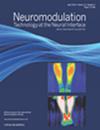脑深部刺激对合并自伤行为的影响:个体患者数据的系统回顾和元分析》。
IF 3.2
3区 医学
Q2 CLINICAL NEUROLOGY
引用次数: 0
摘要
目的:自伤行为(SIB)可在多种神经系统疾病的情况下发生,而这些疾病均可接受脑深部刺激(DBS)治疗。虽然某些脑靶点被认为对 SIB 特别有效,但改善原发性神经系统疾病也可能减少并发的 SIB。我们对个体参与者的数据进行了系统性回顾和荟萃分析,以描述不同神经系统疾病和脑靶点的 DBS 对合并 SIB 的影响:根据《系统综述和荟萃分析首选报告项目》(Preferred Reporting Items for Systematic Reviews and Meta-Analyses)指南,对DBS治疗并发SIB疾病的所有现有文献进行了系统综述。研究人员提取了每位参与者的数据,并计算了SIB严重程度和/或频率指标的标准化均值差异(SMD),以便进行荟萃分析。此外,还整理了人口统计学变量和不良事件:结果:研究人员从 24 篇文章中提取了 59 名患者的数据,这些患者因各种适应症接受了 DBS 治疗,并合并有 SIB。主要神经系统诊断包括抽动秽语综合征(40 例)、肌张力障碍(7 例)、癫痫(5 例)、后天性脑损伤(3 例)、运动障碍(2 例)和强迫症(2 例)。总体而言,DBS 对治疗合并 SIB 非常有效(平均 SMD = -2.4,p < 0.0001),适用于各种原发性疾病和颅内靶点。肌张力障碍患者和以下丘脑后部为靶点的 DBS 在缓解合并 SIB 方面的效果相对较差:结论:对于合并 SIB 的患者,通过 DBS 治疗原发性神经疾病也可减轻 SIB。结论:对于合并 SIB 的患者,通过 DBS 治疗原发性神经系统疾病也可减轻 SIB。尽管目前出现了多个治疗严重 SIB 的靶点,但这项研究表明,在治疗合并 SIB 时应首先考虑针对原发性神经系统疾病的 DBS。本文章由计算机程序翻译,如有差异,请以英文原文为准。
Effect of Deep Brain Stimulation on Comorbid Self-injurious Behavior: A Systematic Review and Meta-analysis of Individual Patient Data
Objective
Self-injurious behavior (SIB) can occur in the setting of many neurologic disorders that are amenable to deep brain stimulation (DBS). Although certain brain targets are believed to be particularly effective for SIB, improvements in the primary neurologic condition may also reduce co-occurring SIB. We performed a systematic review and meta-analysis of individual participant data to characterize the effects of DBS across various neurologic disorders and brain targets on comorbid SIB.
Materials and Methods
A systematic review of all available literature on DBS in treating disorders with co-occurring SIB was conducted in accordance with Preferred Reporting Items for Systematic Reviews and Meta-Analyses guidelines. Individual participant data were extracted and standardized mean differences (SMDs) in metrics of SIB severity and/or frequency were calculated for meta-analysis. Demographic variables and adverse events were also collated.
Results
Data from 59 patients, identified from 24 articles, with comorbid SIB who underwent DBS for various indications were extracted. The primary neurologic diagnoses included Tourette syndrome (n = 40), dystonia (n = 7), epilepsy (n = 5), acquired brain injury (n = 3), dyskinesia (n = 2), and obsessive-compulsive disorder (n = 2). Overall, DBS was highly effective in treating comorbid SIB (Mean SMD = −2.4, p < 0.0001) across primary disorders and intracranial targets. Patients with dystonia and DBS targeting the posterior hypothalamus had relatively less success at mitigating comorbid SIB.
Conclusions
In patients with comorbid SIB, DBS to treat the primary neurologic condition may also mitigate SIB. Although several targets are emerging for the treatment of severe SIB, this work suggests that DBS targeting the primary neurologic condition should be first considered in comorbid SIB.
求助全文
通过发布文献求助,成功后即可免费获取论文全文。
去求助
来源期刊

Neuromodulation
医学-临床神经学
CiteScore
6.40
自引率
3.60%
发文量
978
审稿时长
54 days
期刊介绍:
Neuromodulation: Technology at the Neural Interface is the preeminent journal in the area of neuromodulation, providing our readership with the state of the art clinical, translational, and basic science research in the field. For clinicians, engineers, scientists and members of the biotechnology industry alike, Neuromodulation provides timely and rigorously peer-reviewed articles on the technology, science, and clinical application of devices that interface with the nervous system to treat disease and improve function.
 求助内容:
求助内容: 应助结果提醒方式:
应助结果提醒方式:


